How to Enable or Disable Require PIN for pairing when projecting to this PC in Windows 10?
The Projecting to this PC feature allows users to use a Wi-Fi connection to project the display from one Windows device to another using the wireless network. It uses the Connect app of Windows to wirelessly project the display. Many users that are unaware of this feature will not know how to enable or disable settings for this feature. When pairing two devices, it requires a PIN to connect them. In this article, we will provide you methods through which you can configure the PIN requirement setting for Project to this PC feature.

Enabling/Disabling through the Windows Settings App
Microsoft has included this specific option in the Settings app. Users can simply enable and disable this feature from the Settings app. This setting will not be available if your system does not support wireless functions or if the setting is disabled by the administrator. Follow the below steps to enable/disable the PIN requirement feature for Projecting to this PC:
- Press the Windows and I keys together to open the Windows Settings app and then select the System settings.
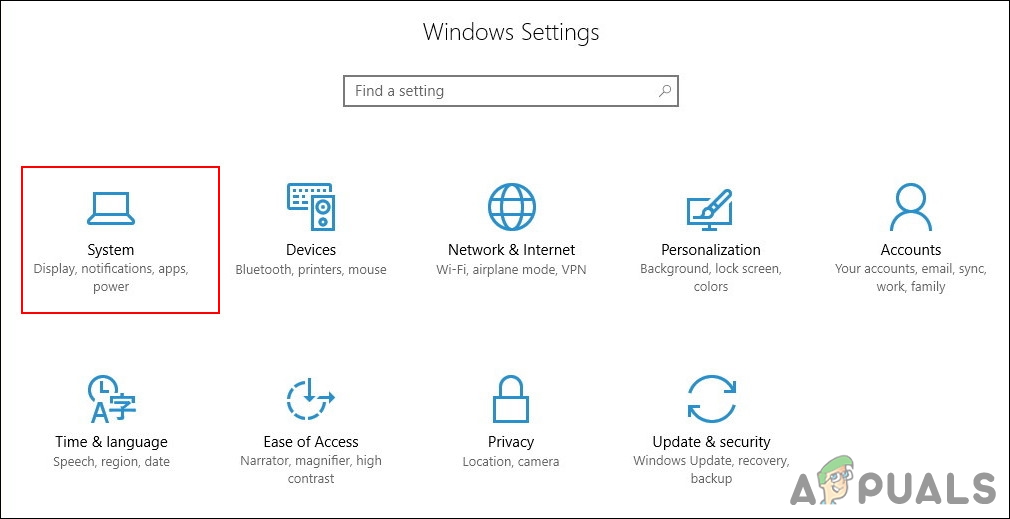
Opening the Windows Settings app - Select Projecting to this PC on the left pane and then change the “Require PIN for pairing” to Never. This will disable the PIN feature when pairing.
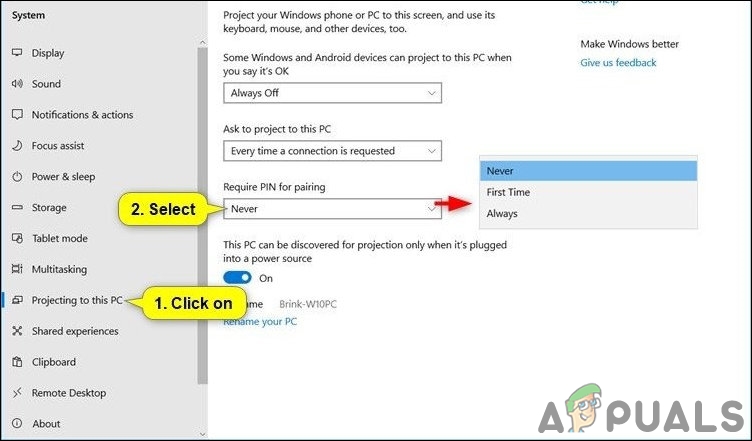
Configuring the PIN settings - The remaining two options are for enabling the PIN for pairing. If you select the First Time option, then it will only ask for a PIN for the first time and then it won’t. If you choose the Always option, then it will always ask for a PIN when pairing.
Enabling/Disabling through the Local Group Policy Editor
Another most convenient way of enabling or disabling the PIN for pairing is by using the Local Group Policy Editor. A policy is already available for this specific setting in the Group Policy Editor. Users can simply edit the policy to enable or disable the setting accordingly.
However, keep in mind that the Local Group Policy Editor is only available in Windows 10 Pro, Windows 10 Education, and Windows 10 Enterprise versions. If you are using the Windows Home version, then skip to the next method.
- Press the Windows and R keys together on your keyboard to open the Run dialog. Now type “gpedit.msc” in the box and press the Enter key to open the Local Group Policy Editor.

Opening the Local Group Policy Editor - In the Local Group Policy Editor window, navigate to the following path:
Computer Configuration\Administrative Templates\Windows Components\Connect\
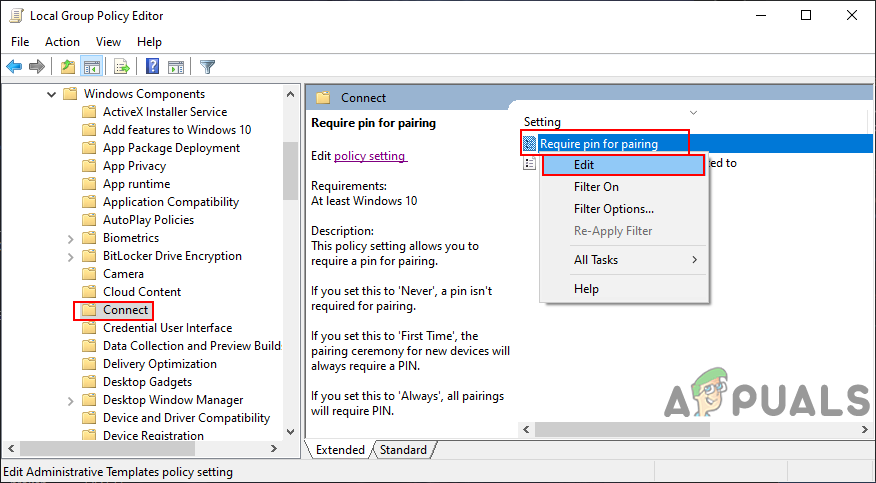
Navigating to the setting - Right-click on the setting named “Require pin for pairing” and choose the Edit option. This will open the setting in another window.
- Change the toggle option from Not Configured to Enabled and then choose one of the following options in the drop-down menu.
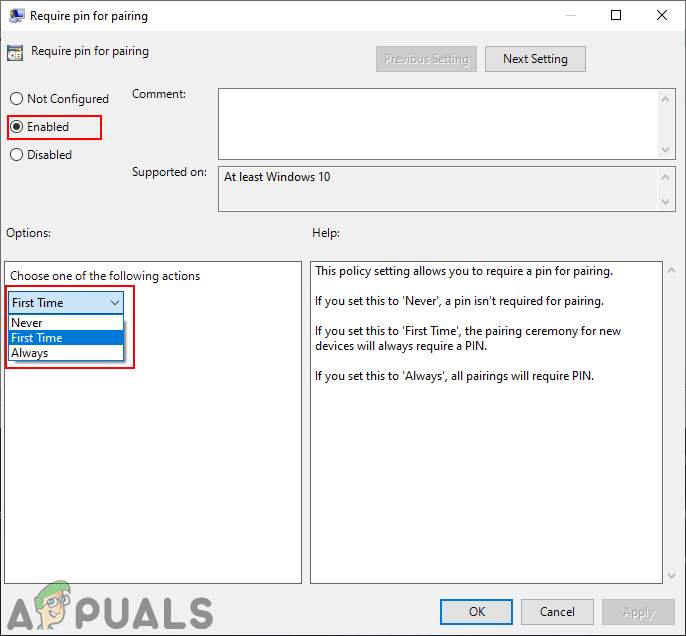
Enabling setting - Click on the Apply, and then click on the Ok button to save these changes. The policy configuration will be updated automatically.
- However, if it doesn’t update the changes, you can open the Command Prompt as an administrator.
- Type the following command in the Command Prompt (Admin) to force an update for the configured policy. You can also do the same by restarting the computer.
gpupdate /force

Updating group policy - You can always revert this back to default by changing the toggle option back to Not Configured in step 4.
Enabling/Disabling through the Registry Editor
This method is similar to the Local Group Policy Editor method. However, in this method, we will be using the Registry Editor to enable or disable the PIN requirement setting. Unlike the above methods, this method requires some technical steps from the user. Some of the keys or values will be missing and the users have to create them manually to configure the setting. If you already used the Local Group Policy Editor method, then the value will be already existing in the Registry Editor.
- Press the Windows + R keys together on your keyboard to open the Run dialog box.
- Now type “regedit” and click on the Ok button to open the Windows Registry Editor. If prompted by UAC (User Account Control), then choose the Yes option.
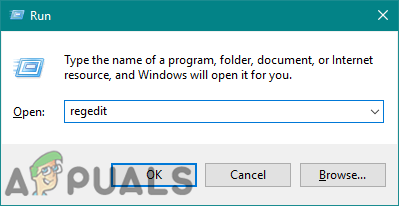
Opening the Windows Registry Editor - Before making any new changes, you can create a registry backup by clicking on the File menu and choosing the Export option. Then, choose a name and the location for the backup and click on the Save button.

Creating a Registry backup Note: You can always recover the registry by clicking on File > Import, and then select the backup file that you previously created.
- By using the left pane of the Registry Editor, navigate to the following path:
HKEY_LOCAL_MACHINE\Software\Policies\Microsoft\Windows\Connect
Note: If the Connect key is missing, right-click on the Windows key and choose the New > Key option. Name the key as Connect.
- Right-click on the right pane of the Connect key and choose the New > DWORD (32-bit) Value option to create a value. Now rename the value as “RequirePinForPairing“.
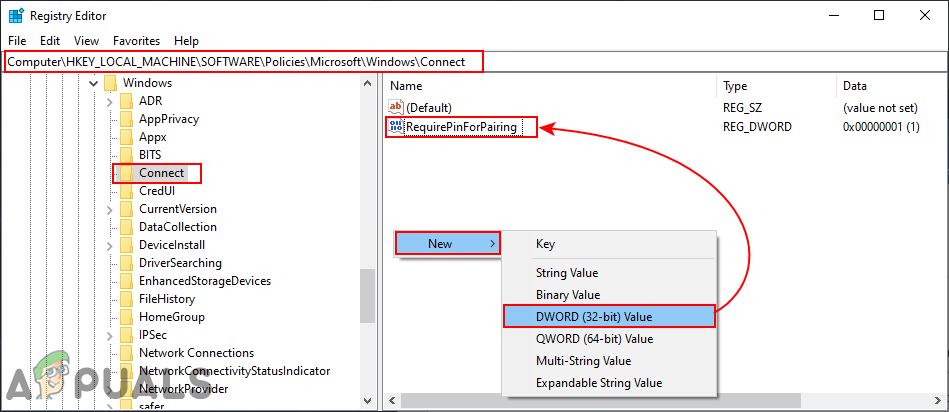
Creating a new value - Double-click on the value to open it and then change the value data accordingly. The Value data 0 is for Never, Value data 1 is for the First Time, and Value data 2 is for the Always option.
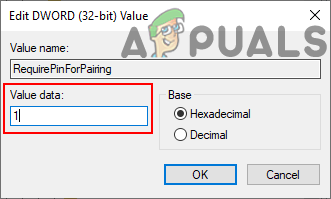
Changing the value data - After the configurations are done, close the Registry Editor, and then reboot your system in order to apply these changes.
- You can always revert back to the default settings by removing this value from the Registry Editor.





